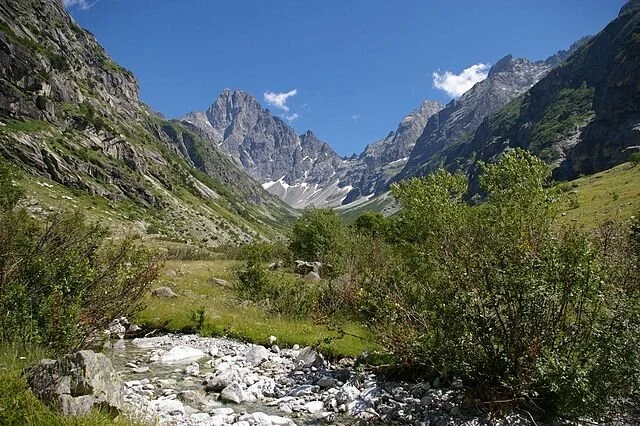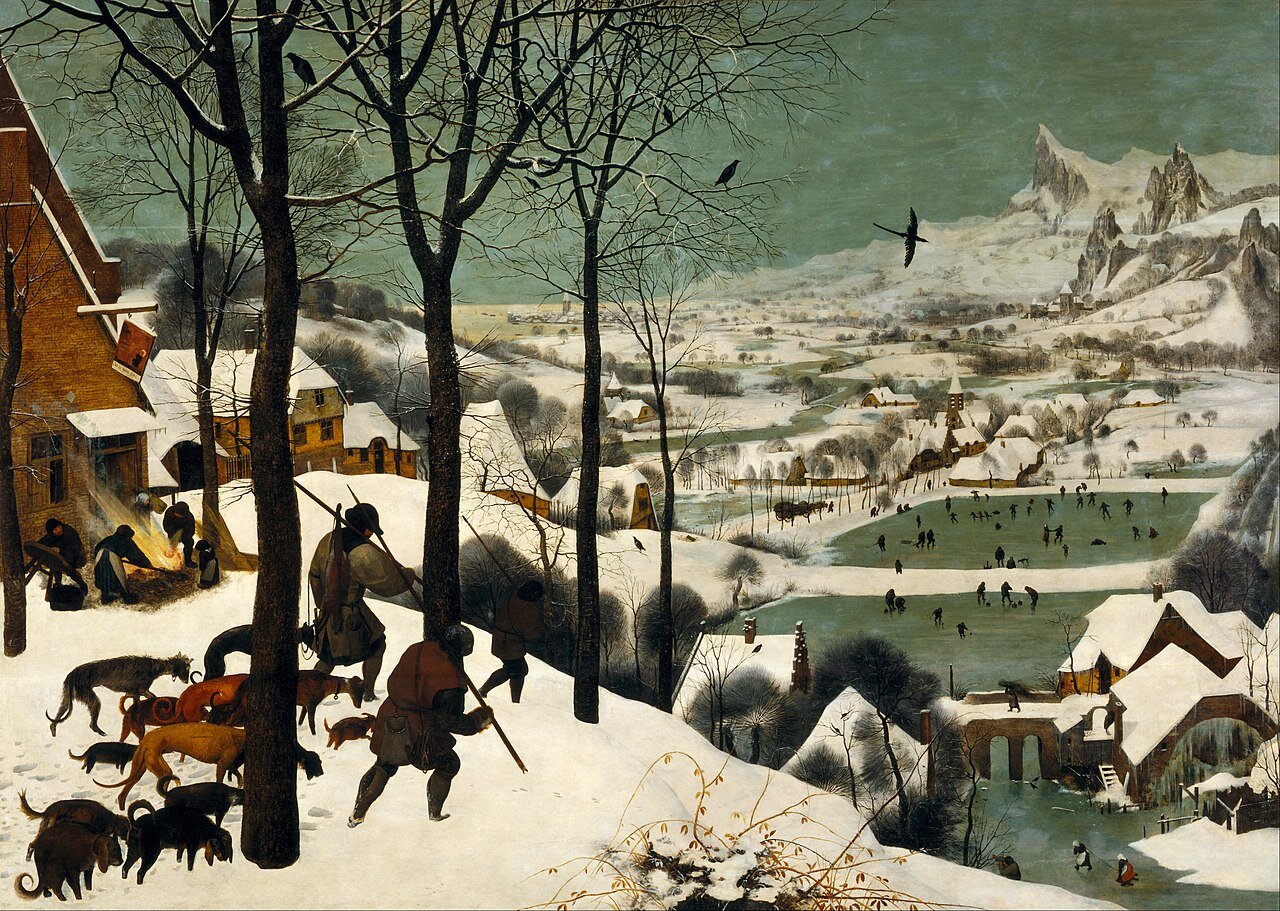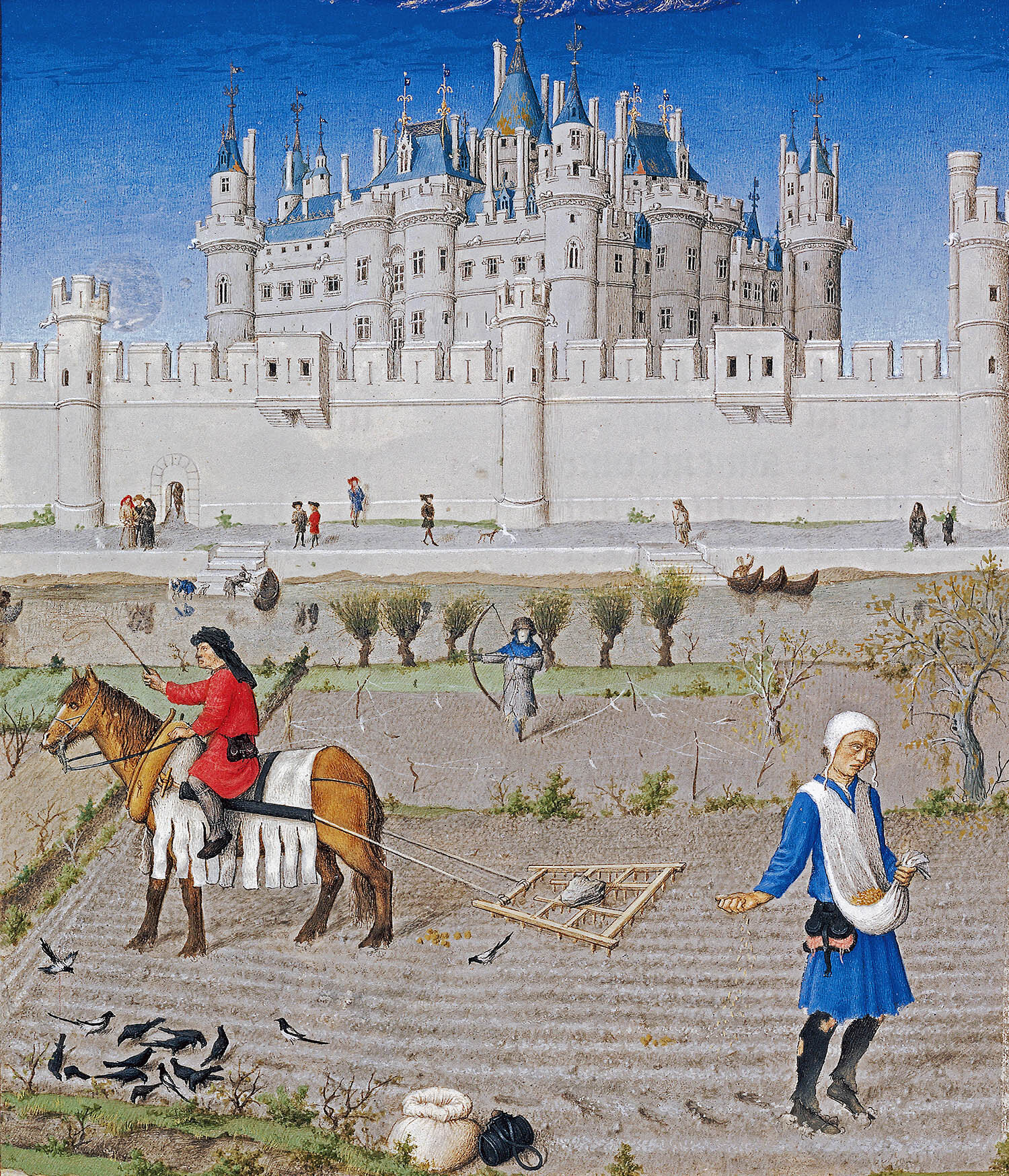The Humanistic Peasantry of Bruegel the Elder

Humanism sought to resolve the idleness of peasantry and scarcity of labor for emerging mercantilism.
Cover photo: The Harvesters (Late Summer), oil on wood, by Pieter Bruegel the Elder (1565). Via the Metropolitan Museum of Art.
The Art of Labor
At the height of the Industrial Revolution in the United States, American workers — including children — suffered twelve hour work days and seven day work weeks. Labor Day originated in 1882 as an annual mass rally in New York organized by socialists and leftist organizations to demand shorter hours, higher pay, safer working conditions, and a labor holiday. President Grover Cleveland would declare Labor Day a federal holiday in 1894.
COVID-19 has revealed who are the essential workers and who performs the unnecessary “bullshit jobs”. This once-in-a-century pandemic has also demonstrated the global interdependency of resources, labor, and supply chains — what we commonly refer to as globalization.
Millions of Americans have lost their jobs, and likely their healthcare. This has inspired me to create a new series on the art of labor through the centuries, with a focus on how work has been valued and represented.
Antwerp
By the 16th century, the Flemish port city of Antwerp had become the economic center of Western Europe, taking the honor from Bruges. Antwerp gained prominence by trading in English cloth, Portuguese spices, and German metalwork.
“In the period 1495-1525, capitalism had gone through the first phase of a worldwide maritime-commercial expansion, which stimulated capitalist forms of organization as well as the growth of industrial production and benefited the southern Netherlands in particular,” documented H.C.M. Michielse and Robert van Krieken in the journal Social Service Review.
Wealthy investors supported the construction of dockyards, as well as mighty ships and their lengthy voyages to the East Indies. As writes historian Huw Bowen, “there was now a different form of organisation emerging which focused on the pooling of capital to enable long-distance trade to take place over several years.” This was the origins of individual capital investment and speculation.
The world’s very first Stock Exchange — the Handelsbeurs — would be established in Antwerp in 1531. The words beurs (Dutch) and bourse (French) are derived from the Van der Buerse family of Bruges, who owned an inn frequented by merchants conducting financial trades.
The historian and biographer Karel van Mander wrote in his 1604 book Het Schilderboek (The Painter’s Book), “The famous and imposing city of Antwerp, prosperous because of its commerce, attracted the most eminent artists from many parts, and in large numbers, since art flourishes where there is wealth.”
The population of Antwerp had grown from just 20,000 at the end of the 14th century to 100,000 by the mid-16th century. The artist Pieter Bruegel moved to the city by 1551, when he is recorded to have joined a local painters’ guild; Peter Paul Rubens arrived in Antwerp by 1589.
Following the 1568 revolt against Philip II of Spain, ruler of the Habsburg Netherlands, known as the Dutch War of Independence, the region would enter a Golden Age. The Dutch East India Company would be established in 1596, with headquarters in Indonesia, signaling the dawn of colonialism.
Realism
The art of Pieter Bruegel — known as Bruegel the Elder to distinguish him from his two sons who followed in his artistic endeavors — is brimming with detail and thoroughly packed with crowds, human and otherwise. He had first worked in the popular and fantastical Boschian manner, a style in which he so excelled that he was originally heralded as the “second [Hieronymus] Bosch”.
The Italian Renaissance had begun in the 14th century and the ideas of classical revival and humanism spread across Europe via trade. Visiting the region was considered something of a rite of passage for training artists — as states 16th century historian Giorgio Vasari — per apprendere la maniera italiana.
Bruegel himself visited Italy between 1552 and 1554, passing through the French Alps. As notes art historian Katrien Lichtert, “The encounter with vast mountainous landscapes was a seemingly inexhaustible source from which he drew inspiration for the rest of his career. Moreover, it was during his journey that Bruegel developed the unprecedented observing realism that would become a hallmark and one of his greatest artistic qualities.”
“[H]e swallowed the mountains and rocks to throw them back up again […] on canvasses and panels,” wrote biographer Karel van Mander, suggesting Bruegel’s interpretations to be “raw and undigested.”
Historians cannot agree on exactly what paintings Bruegel may have viewed, but he certainly would have seen the works of Michelangelo and Titian. His observation of Italian masters inspired Bruegel to reduce the number of figures in his paintings and shift his focus to realism.
Commissioned by a Venetian noble for his palace on the Grand Canal, The Flight into Egypt (circa 1508) is considered to be one of Titian’s earliest paintings and certainly his first masterpiece. Titian devotes much of the canvas to the Holy Family, but he takes the opportunity to display his talents in flora and fauna as well.
The Biblical tale of the Holy Family fleeing from Harrod’s army was a popular subject as it provided the religious pretext necessary to show off an artist’s skills for landscape painting. Bruegel, in contrast to Titian, allows the landscape to become the central focus of the narrative. In Bruegel’s composition, the natural world completely subsumes the panel, relegating the travelling family to a minor detail in the foreground.
The Seasons
Upon return from Italy by 1554, Bruegel designed engravings at the print house Aux Quatre Vents (At The Four Winds) — the first major publisher of Northern Europe — which provided him with much fame. In 1563, Bruegel married and moved to nearby Brussels.
In 1565, Bruegel was commissioned to create a series of works by local merchant Niclaes Jongelinck for his suburban Antwerp villa. Jongelinck was born in 1517 to a large family involved in commerce, art, and royal offices. He would become a loyal patron, owning at least 16 paintings by Bruegel the Elder alone.
It is unclear how many works were originally included in the series, alternately referred to as The Seasons or The Months; historians argue the full set likely comprised either six or twelve paintings. Today, only five are known to exist. The series is thought to have decorated a dining room, where it would have adorned three of four walls, serving as a “grand three-dimensional world landscape.”
The Seasons marks Bruegel’s departure from his fantastical works painted just a few years prior in the tradition of Hieronymus Bosch and represents Western art’s transition from religious connotations to works inspired by themes of humanism.
Because Antwerp was not famous for any particular creative tradition, artists were free to experiment. Bruegel is credited with many innovations, being the first artist to design four separate stand-alone images to represent the four seasons. “Though rooted in the legacy of calendar scenes, Bruegel’s emphasis is not on the labors that mark each season but on the atmosphere and transformation of the landscape itself,” states the Metropolitan Museum of Art.
Trees play a crucial role in The Seasons, most obviously to denote the natural progression of the year’s passing, but also functioning as repoussoir, “giving depth to the wide open landscape”. Branches extend past the edge of every panel, establishing a sense of proportion and perspective.
Bruegel’s landscapes coincided with a growing interest in viewing the world through cartography, as can be noted in the artist’s high vantage points. “In Bruegel's work for the first time the lofty post of observation acquires the meaning of a liberation from terrestrial limitation, of free breathing in purer air, of the ability to survey a wondrous order which remains forever concealed to those who live below,” wrote 20th century art historian Charles de Tolnay.
“The point of all quintessentially Renaissance activity was to redraw the universe, expecting to find its science divine and its divinity scientific. The visual arts were at the centre of this project”, writes Louise Milne, Associate Professor School of Arts and Creative Industries. Mapmaker and friend Abraham Ortelius declared Bruegel as “Nature’s own rival”.
The Hunters in the Snow is considered the first winter landscape in Western art. Referencing the panel, curator Nadine Orenstein commends, “[Bruegel] captures the chill in the air,” adding, “He’s able to capture weather like no other artist.”
Of The Harvesters, Keith Christiansen, Chairman of European Paintings at the Metropolitan Museum, declares, “This is the first modern landscape in Western art. Bruegel has inserted a completely coherent middle ground and it increases our engagement with the landscape.”
Peasantry
“The moral virtue of labor was preached throughout the Middle Ages, and the attitude toward voluntary poverty had gradually changed from tolerance on religious grounds to social disapproval,” wrote H.C.M. Michielse and Robert van Krieken, “Work was the fulfillment of God’s will and thus took on a holy character.”
Serfdom was largely abolished in the Netherlands by the 1500s but continued in a diluted form until the French occupation of 1795. The peasants Bruegel depicts are the descendants of the primitive Batavians — the Roman name for the area of the Netherlands — who are “stubborn, sturdy, tireless, [and] stout”. Bruegel painted these people with such frequency, he became known as the Peasant Bruegel.
The Ancient Greek philosopher Xenophon believed that agriculture is the most righteous work “because the earth is divine to those who have the ability to learn from her. She gives the greatest benefits in return to those who cultivate her best.”
Scholar Jane ten Brink Goldsmith observed that, for Bruegel, “the peasant is primarily in his art an extension of the landscape, that is, a human metaphor for nature.” In the villa’s dining room, the series would have sparked thoughtful conversation, such as “whether the simple country life was preferable to that of Jongelink and his [noble] guests,” notes art critic Michael Prodger.
In his 1586 book Ethics, the contemporary philosopher Dirck Coornhert wrote “that the person who lives in accordance with nature is easily satisfied and rich, but that he who desires not what is dictated by his natural needs, but desires what is instilled by his limitless delusion instead, is always poor and can never get enough.”
According to art historian Zuzanna Stanska, The Harvesters “and the rest from the series is groundbreaking in the history of Western art. The religious pretext for landscape painting has been suppressed in favor of a new humanism, and Bruegel’s unidealized description of the local scene is based on natural observations.”
Throughout the composition, workers can be seen toiling through the titular annual harvest. The activity was a popular artistic subject, with the commodity of wheat considered “gold of the earth.” A large section in the lower right corner of the panel is dedicated to a gathering of peasants resting and partaking in a meal. They appear to be eating summer porridge, with bread, cheese, and pears.
Biographer Karl van Mander claimed that Bruegel would disguise himself as a peasant to observe his subjects. The artist was sensitive to the divisions of class. While it is impossible to interpret his intentions, “Bruegel comes across as an inherently democratic painter, part of popular, not elite, culture,” wrote Tom Lubbock, chief art critic of The Independent.
“His art represents the early stages, the progressive, indeed revolutionary, element of bourgeois realism,” concludes Jenny Farrell of the Galway-Mayo Institute of Technology. Bruegel’s portrayals of Dutch peasantry were generally sympathetic, as can be seen in his merry 1567 painting Peasant Wedding. Some historians suggest the rightmost figure — dressed in black — is a self-portrait of Bruegel himself. According to British magazine The Economist, Peasant Wedding is “the first everyday scene depicted in monumental form.”
Humanism and Mercantilism
The Catholic humanist theorist Juan Luis Vives developed the idea that to spare man the indignity of poverty, he must be compelled to work. Vives had been born and raised in Valencia, but left Spain as a teenager to avoid the Inquisition. Vives’ 1526 book On Assistance to the Poor, written specifically for the senate of Bruges, is considered one of the first studies ever published on the topic of social policy.
According to Vives, “some people are poor, not for lack of money, but because they lack physical strength, health, intelligence or judgment” and that the poor “should not trust in the assistance of men, but only in Christ”.
The new system of mercantilism required a large and reliable work force. “The bourgeoisie was thus concerned to deal with work‐shy beggars and [eager to] transform them into a reserve army of labour,” write H.C.M. Michielse and Robert van Krieken.
Noting that manufacturers “complain that workers are scarce”, Vives encouraged schooling and apprenticeships to develop a disciplined working class. “Those who can work should not remain idle, because Paul, the disciple of Christ, forbids it,” declared Vives, citing Paul’s writing in Thessalonians: “For even when we were with you, this we commanded you, that if any would not work, neither should he eat.”
“Even blind people should not remain idle,” Vives argued. “Sick and old people should be given easy things to work on, according to their age and their health.” The Italian humanist Andrea Alciato went so far as to declare, “Leisure is a detestable thing.”
Philosopher Dirck Coornhert wrote in his 1586 book Ethics that fathers should prepare their children with “education, the [learning of] useful crafts, or appropriate manual labor, [so] they will be able to provide for themselves and their family, thus serving society and harming no one.”
Bruegel’s own views likely mirrored Coornhert’s as can be seen in his moralistic works, such as The Poor Kitchen and The Rich Kitchen (alternately titled The Thin Kitchen and The Fat Kitchen). In the former, Bruegel depicts a dwelling occupied by gaunt peasants with scarcely anything to eat. At a table, men fight over a pot of mussels and another pair of men reach at the large figure in the doorway, suggesting desperation will turn them to cannibalism. Words underneath read in both French and Flemish, translating to “Where the thin man does the cooking it’s a poor kitchen indeed / So I run to the fat kitchen with speed”.
In The Rich Kitchen, Bruegel illustrates a gathering of rotund nobles with an overabundance of food. Pounds upon pounds of meat hang from the ceiling, piglets lay on the crowded table, and even the dogs appear large and overfed. Several men kick out the starving peasant. The words read, “Go away, you thin man, however hungry you are / For this is the fat kitchen and you do not belong here”.
The pair of caricatures, however interpreted, clearly juxtapose the duality of the extremes of abstinence and overconsumption. “The grotesque body represents the anti-thesis of the classical body,” writes scholar Lisa Strickland, adding “Bruegel displays a bit of folk humor even while he infuses it with humanistic comedy.” Throughout his oeuvre, Bruegel appears to advocate for temperance, moderation, and compromise between the poorest and richest of society.























